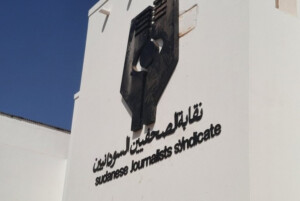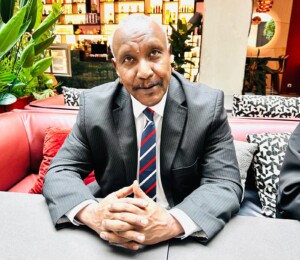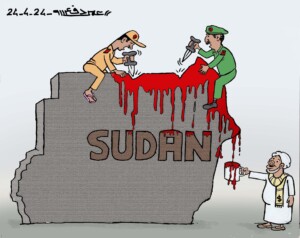Sudan’s gold revenues hit $1.24 billion: Minerals Minister
Sudan produced 25.6 tons of gold from January to November this year, amounting to $1.24 billion, according to the federal Minister of Minerals. The Minister of Investment presented his Ministry’s plans for 2017 to the parliament last week. The United Arab Emirates (UAE) promised Khartoum a $500 million deposit.
Sudan produced 25.6 tons of gold from January to November this year, amounting to $1.24 billion, according to the federal Minister of Minerals. The Minister of Investment presented his Ministry’s plans for 2017 to the parliament last week. The United Arab Emirates (UAE) promised Khartoum a $500 million deposit.
Minerals Minister Ahmed El Karori told the national Omdurman TV yesterday that the 25.6 tons of gold produced this year so far have been exported “via the official channels represented by the Central Bank of Sudan”. He noted that the price of one ton of gold currently amounts to $40 million.
The Minister said that there are 42 mining companies producing gold in the country. The profits of the Khartoum-based Ariab Mining Company increased by 18 per cent. The profits of the Sudamin company amounted to SDG98 billion (almost $15 billion). He further lauded the cooperation with Saudi Arabia and Russia.
The Ministry plans to double the gold and other minerals production in 2017. The first two quarters of 2015 witnessed a gold production of 43 tons, while the production in the same period in 2014 was about 31 tons, according to the Ministry in April this year.
Investment policies
The pro-government Sudan Vision Daily reported today that the Investment Ministry plans for 2017 to regulate the free markets and zones, and set up a number of national strategic projects. The national investment map will be modernised to be able to determine investment priorities.
The Ministry will work on the adoption of the Investment Encouragement Bill, and “the preparation of its executive regulations”.
For the “economic development sector”, the Ministry planned four projects: investment promotion, enhancing a culture of investment, an e-communication project, and the development of investment relations between Sudan and the world. As for the “socio-cultural development sector”, the Ministry foresees “the completion of the functional structure and the creation of the work environment”.
Deposit
On Tuesday, Presidential Aide Ibrahim Mahmoud Hamid announced that Sudan will receive a $500 million deposit from the United Arab Emirates (UAE).
The week before, a Sudanese delegation led by President Omar Al Bashir visited the UAE where he reportedly discussed bilateral ties between the two countries.
It is not clear to what extent the deposit will benefit the Central Bank of Sudan in its efforts to increase its allegedly low hard currency reserves. For years, Sudan is suffering from a shortage of hard currency, much needed for the import of basic commodities.
The hard currency rate on the black market in Sudan began to rise rapidly in early 2010. In September that year, the Central Bank of Sudan announced that the lack of hard currency was becoming acute. The secession of South Sudan in July 2011, with which Sudan lost two-thirds of its oil revenues, an important source of hard currency, exacerbated the crisis.
Austerity measures
As the ongoing shortages of hard currency at the Central Bank of Sudan continued to push the black market rate of the US Dollar upwards this year, Khartoum decided on an economic reform programme, which according to President Al Bashir was needed “to avoid the collapse of the country”.
Minister of Finance Badreldin Mahmoud Abbas announced the liberalisation of fuel and electricity prices on 3 November. Two weeks later, while the domestic transportation tariffs were soaring, the government also liberalised the official hard currency rates for a number of import goods and services.
After the Central Bank of Sudan cancelled the US Dollar rate of SDG7,5 for the import of medicines, the new Dollar rate rose to SDG17,50. Medicines prices doubled and in some cases even tripled. At the same time, the Civil Aviation Corporation officially requested airlines flying on Sudan to adopt a Sudanese Pound rate of 15.90 for one US Dollar. The prices of airline tickets immediately rose by more than 150 per cent.
The austerity measures and the ensuing prices hikes initially led to limited street protest, mainly by young women and students. In mid November, social media activists began to call for a three-day civil obedience action on 27-29 November. Many residents of Khartoum responded to the call, and declined to go to their work and send their children to school. Many shops kept their doors shut.
State budget
On Tuesday 6 December, the Minister of Finance reported to the national parliament that the deficit in the 2017 state budget will rise to SDG19.5 billion ($3 billion). The year before, the deficit was SDG13.3 billion (about 2 billion). In 2014, it amounted to SDG12 billion ($1.8 billion).
Sudanese economists have attributed the growing budget deficit to increased government spending on the military and security sector and the wars, to the slack in the state administration, the shortage of cash reserves, and the collapse of most of the industrial sectors in the country.
The US-based Enough Project stated in a report in August that according to Sudan’s 2016 national budget, 76 percent of the government expenditure is dedicated to the defence, police, and security sectors, while only eight percent of projected expenditures are earmarked for the agriculture and manufacturing sectors, and the health and education sectors.
Economic diversification
In late September, the World Bank urged Sudan to accelerate its economic diversification, and exert efforts to remove the barriers for an effective diversification.
These include high and volatile inflation, a long overvalued exchange rate, and low agricultural productivity, the World Bank reported.











 and then
and then